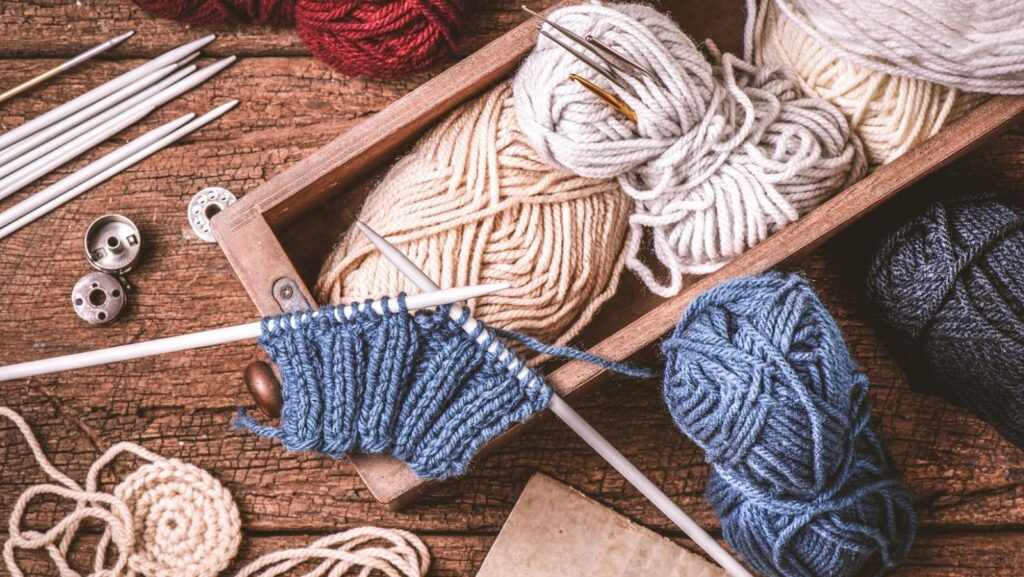Ever found yourself tangled in the age-old debate of knitting versus crochet? It’s a question that’s been asked time and time again: which is easier, knitting or crochet? As a seasoned knitter and crocheter, I’ve navigated the intricate paths of both crafts, and I’m here to shed some light on this intriguing topic.
Is Knitting Easier Than Crochet
Diving into the specifics, knitting and crochet don the craft scene with unique characteristics. Knitting, traditionally popular, employs two needles to manipulate loops of yarn. Through these loops, intricate designs, from cozy scarves to charming baby booties transpire. Knitting lays claim to several benefits, such as dual versatility. That means you can knit both flat pieces and tubes with the same set of needles. Crochet, on the other hand, gives voice to artistry with a single hook. The major hallmark of crochet lies in its ability to facilitate creating three-dimensional pieces. Hats, amigurumi toys, baskets—you name it, crochet can craft it. Another crochet applause results from its simple pattern reading. Unlike knitting, you typically complete each stitch in crochet before moving on to the next, making it less complicated to track.
Understanding Knitting and Crochet
Practice forms the cornerstone of mastering both knitting and crochet. Though I must highlight, the essential techniques in each craft differ greatly. It’s imperative to understand this variation to make an insightful comparison.
Knitting primarily involves slinging loops on two needles, a technique that might feel familiar to beginners. The technique relies mainly on two foundational stitches, known as the knit and the purl. To craft a knitted piece, you would alternate between these stitches, creating different patterns in the process. On the other hand, crochet utilizes a single hook to manipulate loops and stitches. I find crochet techniques intricate yet fascinating – they can create a wide array of patterns and designs. The fundamental stitches in crochet include the chain stitch, single crochet, and double crochet. By combining these stitches, you can create endless variations in your crochet work. Consider the granny square, a classic crochet pattern. It involves chaining, double crochet stitches, and slip stitches to produce a superb three-dimensional design.
Noticeably, knitting gives a smooth, flat texture which is ideal for crafting scarves, blankets, or shawls. In contrast, crochet often results in a thicker, sturdier texture, making it perfect for creating toys, hats, or slippers.
Learning Curve Considerations
Firstly, mastering the basic stitches forms the cornerstone of both crafts. As mentioned earlier, knitting primarily incorporates the knit and purl stitches. I’ve found that beginners generally pick up knitting rapidly, especially when focusing on flat pieces which only require minimal manipulation of the two needles.
Conversely, crochet hones in on the chain stitch, alongside single and double crochet stitches. It offers a quicker route to creating recognizable structures, given that it employs a single hook, but some find the three different foundational stitches slightly overwhelming initially.
Secondly, the ease of rectifying mishaps is a crucial aspect beginners should be aware of. Undoing a row in knitting can be a daunting task, particularly for beginners, given the fear of dropping stitches during the correction process. In contrast, crochet allows for more straightforward mistake fixing, with the need to unravel only up to the point of the error, providing some comfort to novice crafters. Finally, let’s look at tool handling. Handling two needles in knitting might seem intimidating at first, but it’s made easy by the rhythmical movement of stitches from one needle to another.
The Versatility
After exploring the distinctive aspects of knitting and crochet, it’s apparent that each holds its own charm. Knitting, with its knit and purl stitches, offers a smooth entry for beginners. It’s simple yet produces incredibly cozy garments. On the other hand, crochet, with its chain, single, and double crochet stitches, constructs robust structures, though it might seem a bit daunting at first. So pick up those needles or that hook and start creating!

